Museum of Defense of Leningrad
43 photo with description02.03.2020 07:34
02.03.2020 07:34
Andrey Panevin

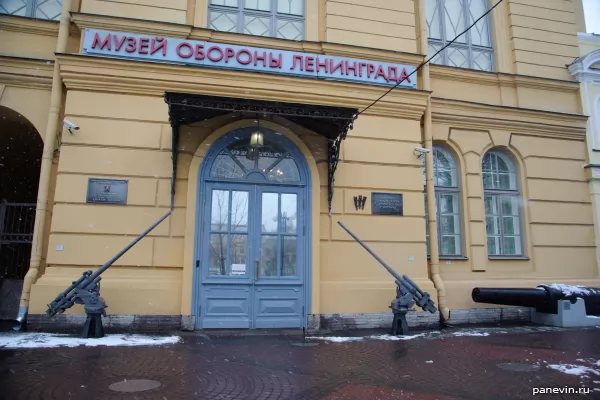
At the entrance to the museum are two anti-aircraft guns.
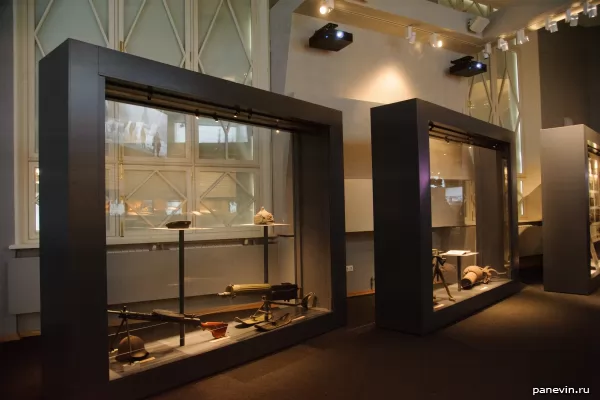
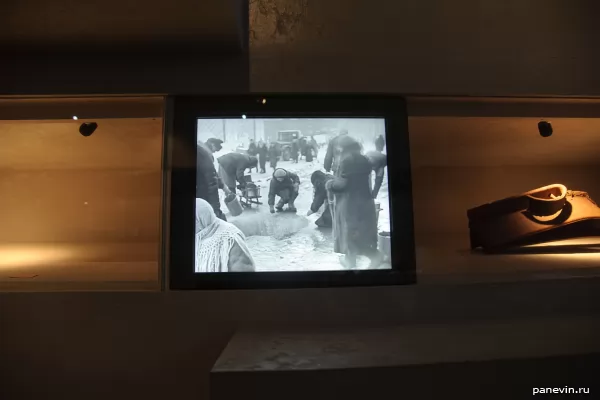
The updated museum has many interactive screens showing films about the blockade.
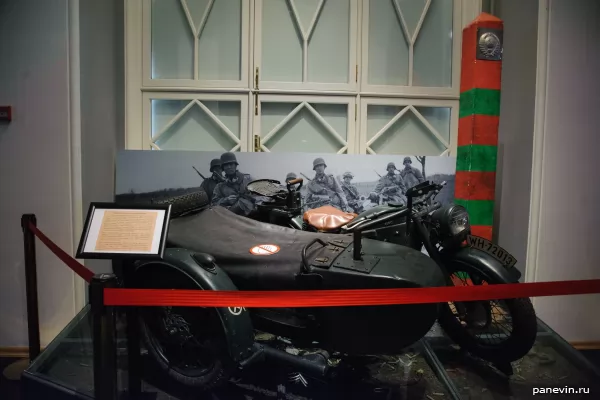
Trophy German motorcycle Zündapp KS-600. The motorcycle was made in Germany on June 22, 1941, and was used in the troops of Army Group North. It was captured during the operation to break the blockade in 1943. Here is what sergeant Nikolai Iskhomov, a participant in the battles for Leningrad, told about this event: “The fascist wanted to crush me, but I took it by cunning: he turned and jumped right across the wheel at him. He grabbed his throat, tumbled down into the cradle and finished off his machine gun. " For his perfect feat, Sergeant Iskhomov was awarded the Order of the Red Star, and the motorcycle was left to him as a gift from the command.
After the war and demobilization, Nikolai with his trophy returned to his native village of Ochakovka, Smolensk region. There, the resourceful veteran adapted the motorcycle for agricultural needs, using it as a tractor. This "tractor" has worked in agriculture for 40 years.
After the death of Nicholas, the motorcycle was inherited by his son, and from him by his grandson Stanislav, who, learning about the revival of the Museum of Defense of Leningrad, in memory of his grandfather - the defender of the hero city, drove the motorcycle from Smolensk to the city on the Neva and it was useless handed over to the museum.
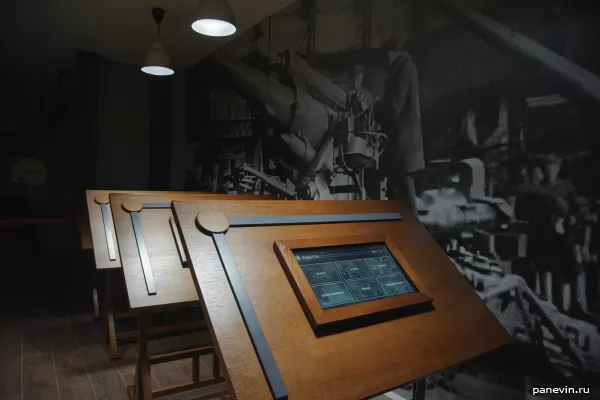
Media Library - a room with interactive screens, you can watch reading: photographs, documents, audio / video, diaries and memories, unthinking stories.
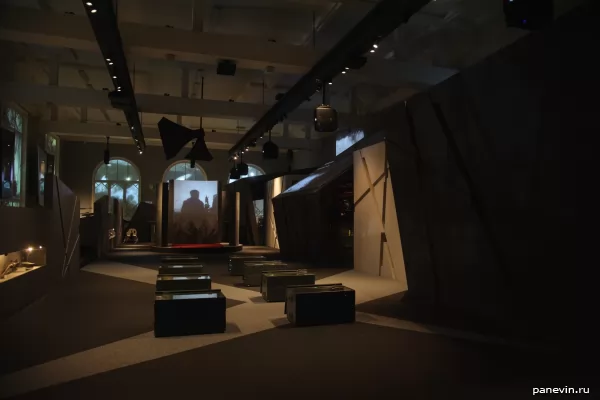
The main hall of the museum.
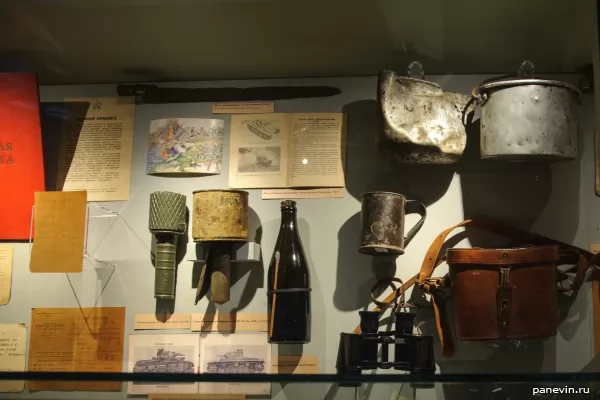
Anti-tank grenades and a Molotov cocktail.
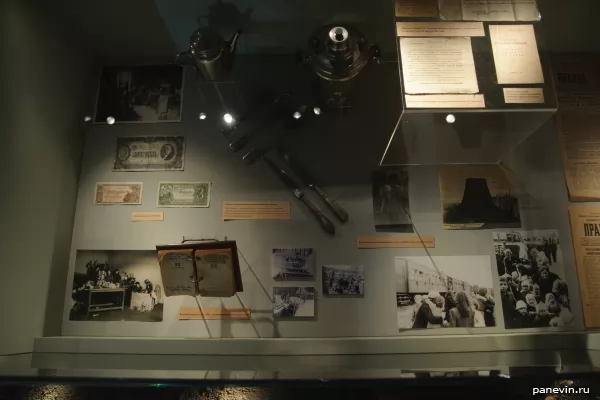
Items transferred by citizens to the Defense Fund.
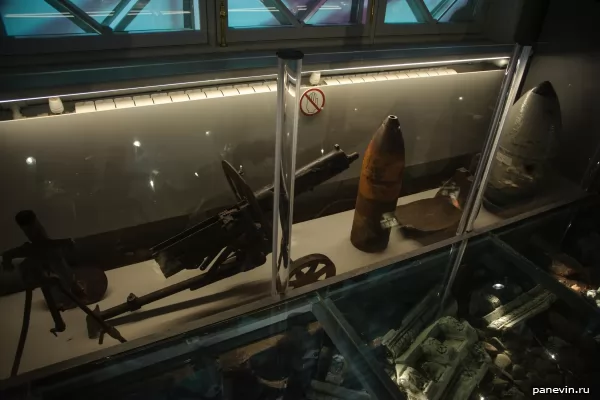
Machine gun "Maxim" and Wehrmacht artillery shells.
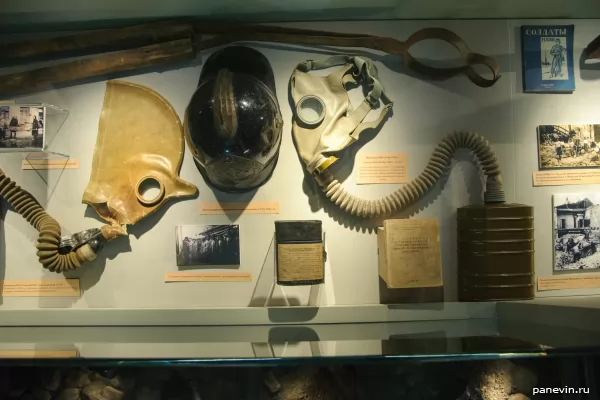
Gas masks and premium helmet of the head of the fire department. The main threat to the blockade was “lighters” - incendiary bombs, so MPVO (Air defense) detachments were created to help firefighters, who were on duty on rooftops and warning about air raids. The fighters of these detachments were trained how such bombs can be put out, in the ranks were women, children, and even composer Dmitry Dmitrievich Shostakovich.
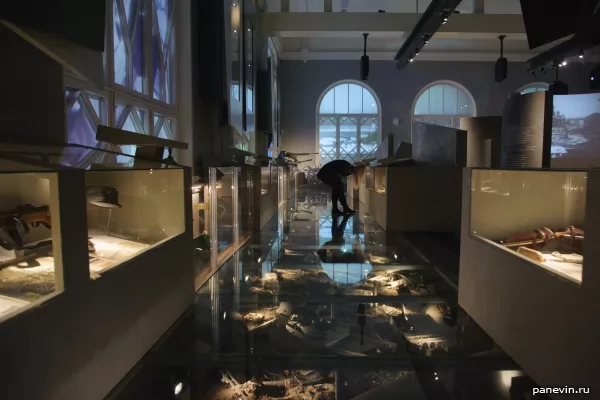
Museum stands, weapons exposition. The floor is transparent, underneath it is like a battlefield dotted with weapons and ammunition. Another amazing decision - newsreel frames are projected onto the windows, which creates a separate atmosphere.
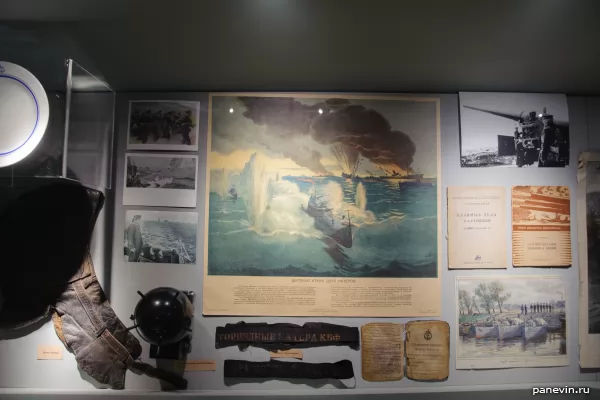
The KBF stand and the story of the impudent attack of September 13, 1941, when two of our torpedo boats attacked German transports with a convoy of seven destroyers, sinking three vehicles. Torpedo boats under the command of Captain 3rd Rank S. A. Osipov were able to safely return to base.
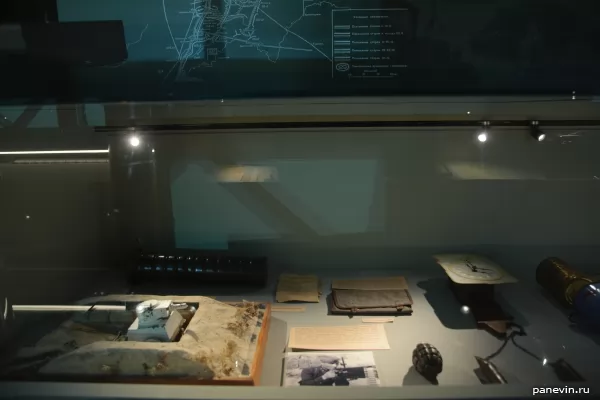
To the left is a firing point from a tank turret.
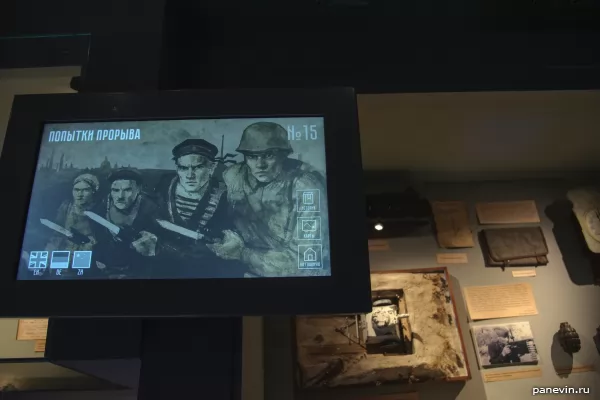
An interactive screen with a story about attempts to break the blockade, which began immediately - in October 1941, but will only succeed in January 1943.
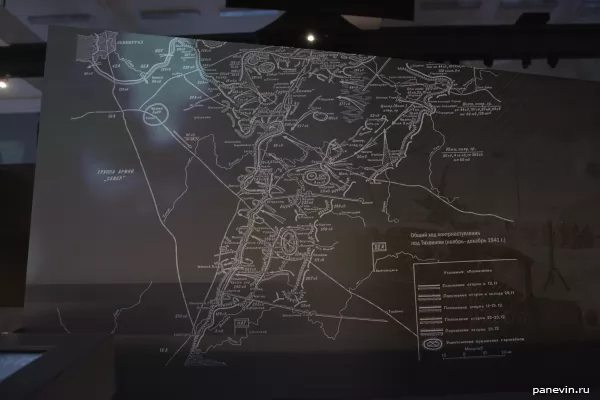
Map of the general course of the counter-offensive near Tikhvin November-December 1941.

Anti-tank rifle raised from the ground.
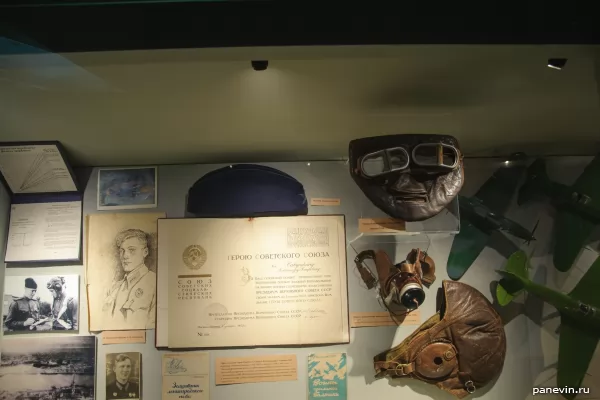
A stand dedicated to aviation and the award sheet of the Hero of the Soviet Union Alexander Petrovich Savushkin.

Overalls for the pilot of the Red Army and the uniform of the pilot of the Luftwaffe.

German air bomb.
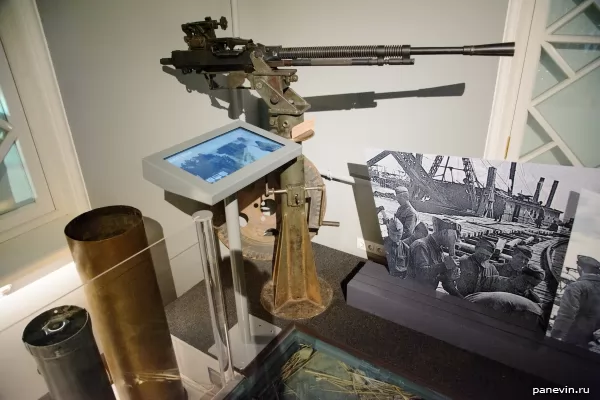
DShK machine gun.
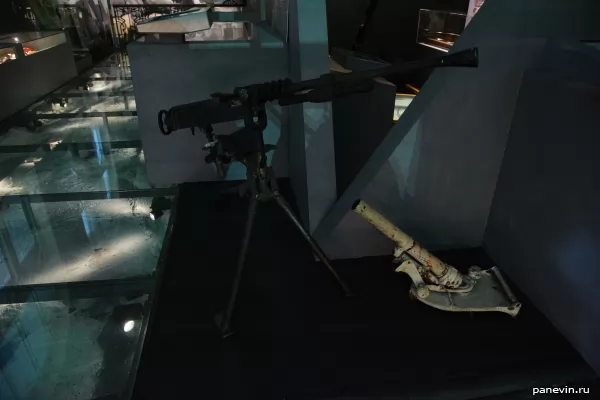
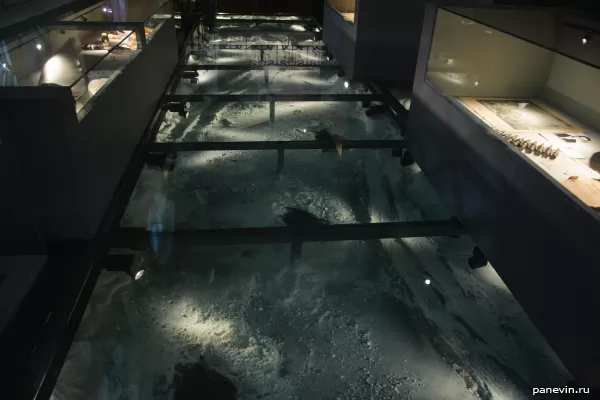
Under a glass floor an impromptu Road of Life.
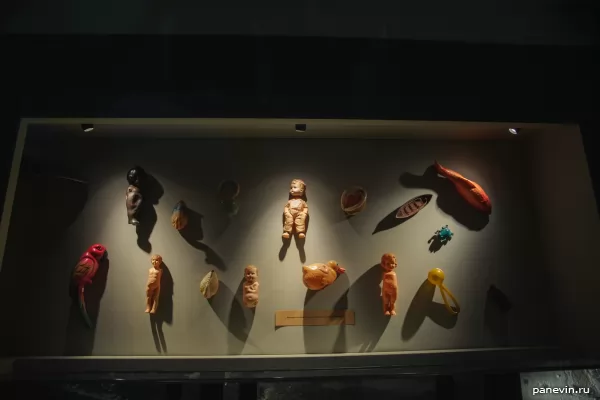
Toys from a dead ship, raised from the bottom of Lake Ladoga.
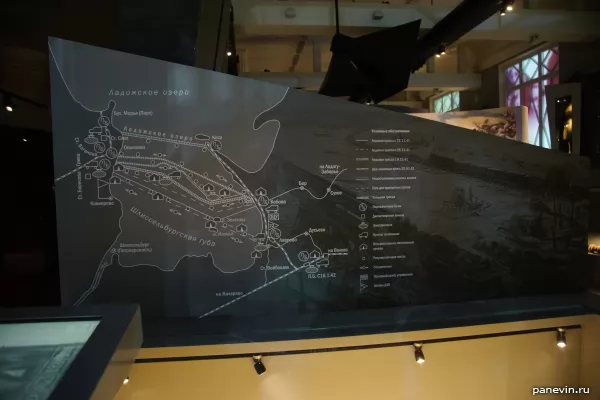
Schemes of ice tracks through Lake Ladoga.
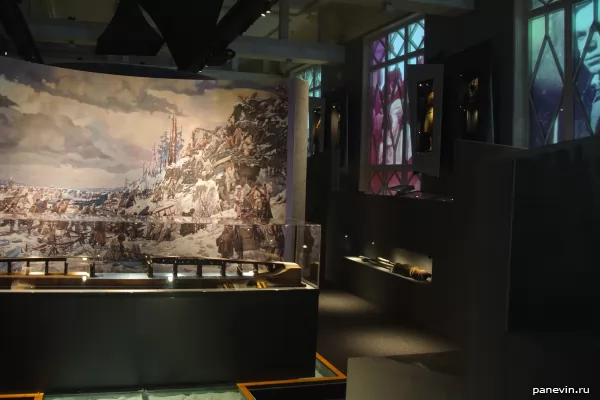
A mock-up of a high-water bridge across the Neva River in the Shlisselburg area, built in March 1943 after breaking the blockade.
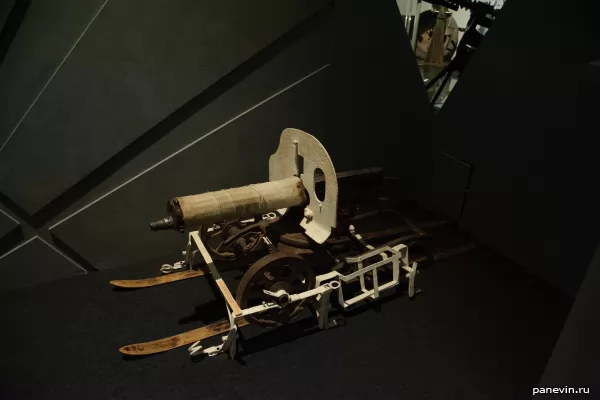
Machine gun "Maxim" on an impromptu sleigh of skis and with winter camouflage from ordinary bandages.
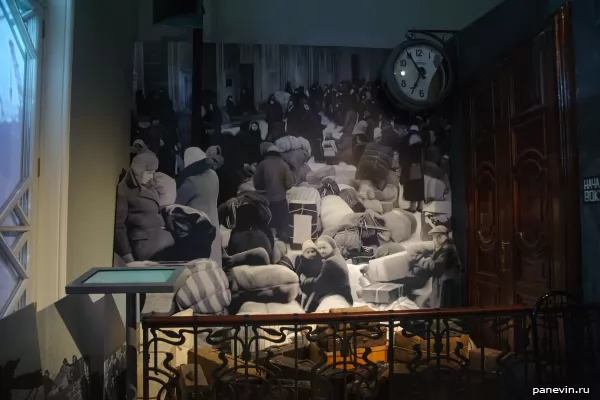
During the blockade, 1.5 million people were evacuated from the city.
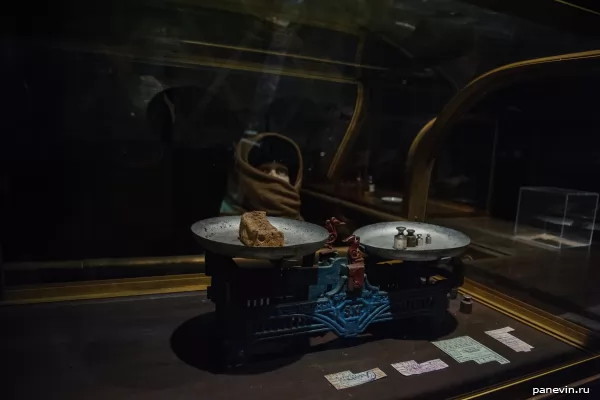
Food coupons. On November 20, 1941, the bread norm was reduced to 125 grams, the most difficult months.
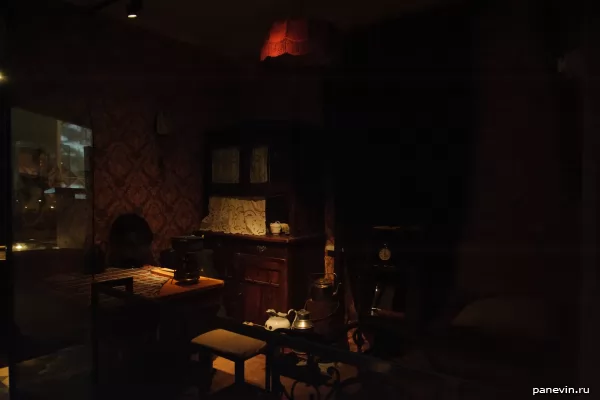
Leningrad apartment.
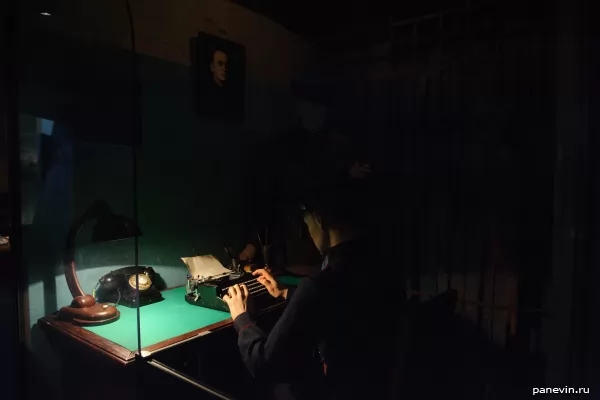
Cabinet of the NKVD fighters.
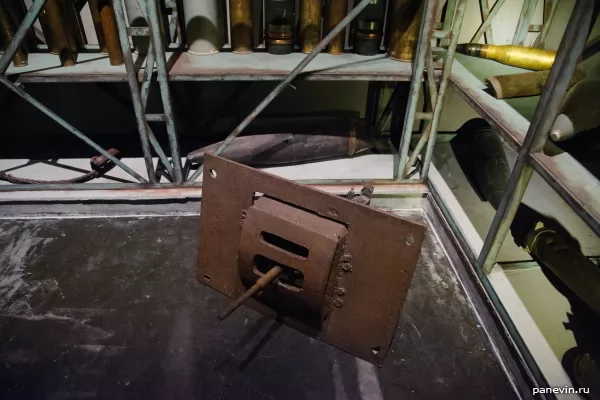
Armored machine gun point.
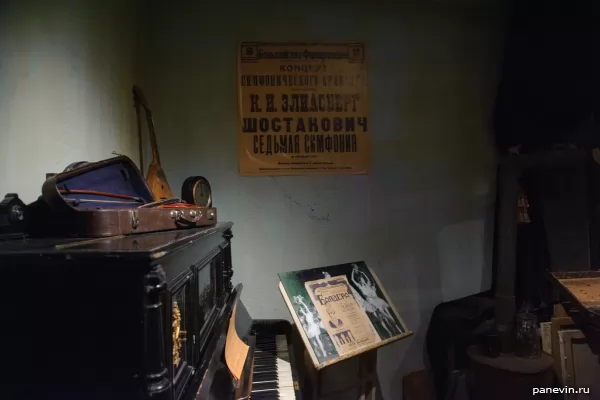
The hall illustrating the cultural life of the besieged Leningrad.
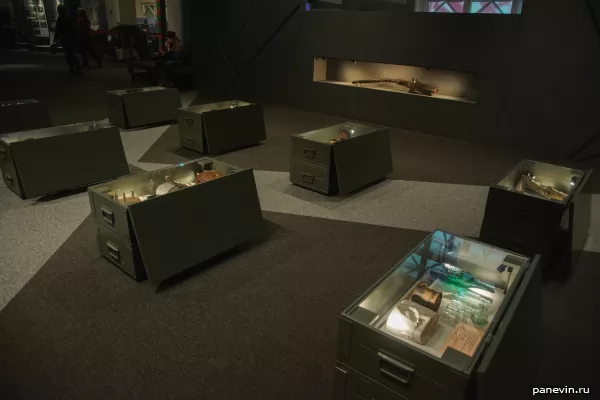
Ammunition boxes with objects raised from the ground.
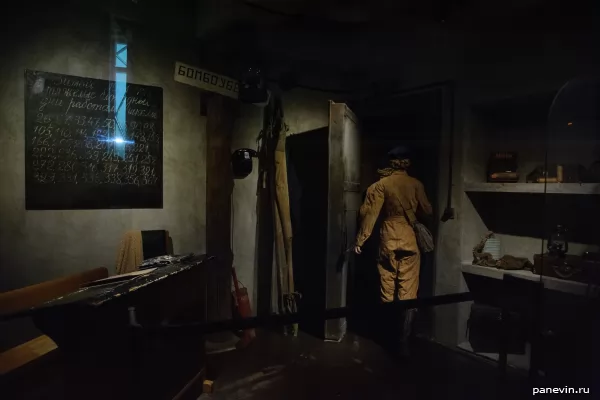
Bomb shelter.
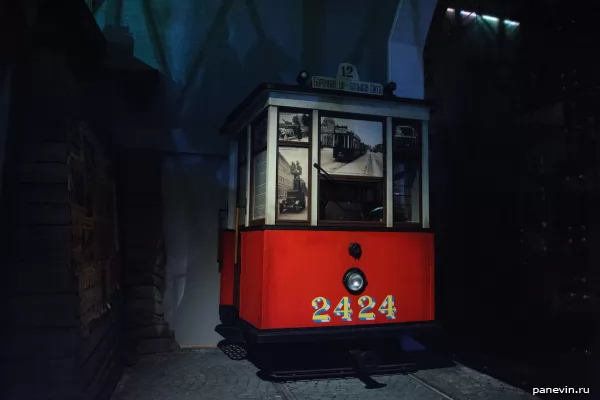
The tram became a symbol of resilience - it delivered fighters and weapons almost to the front line.
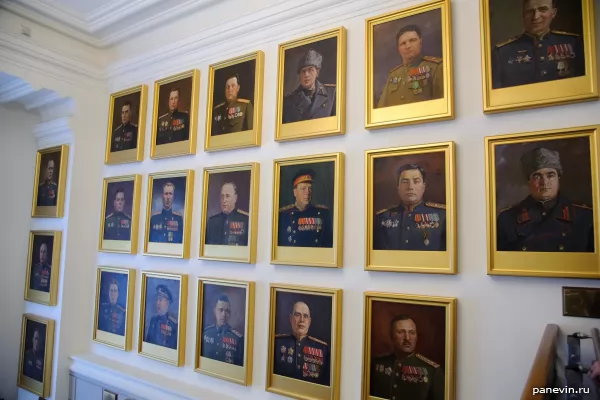
Gallery of portraits of Soviet military leaders.
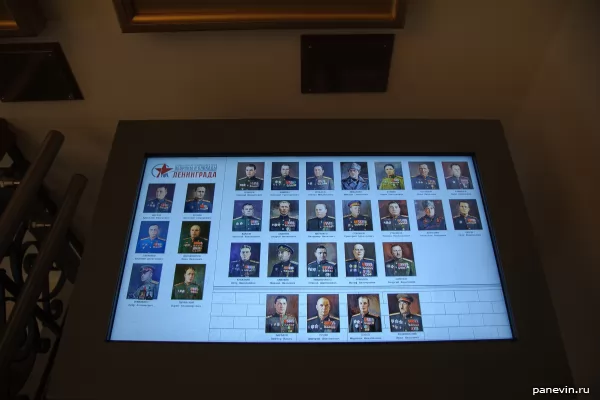
Interactive screen with biographies of Soviet military leaders.
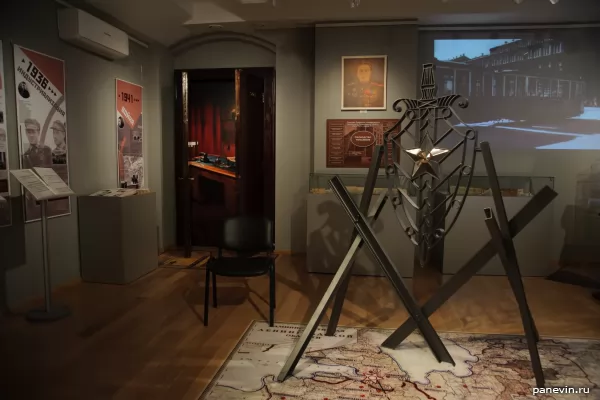
A hall telling about the work of state security agencies and traitors.
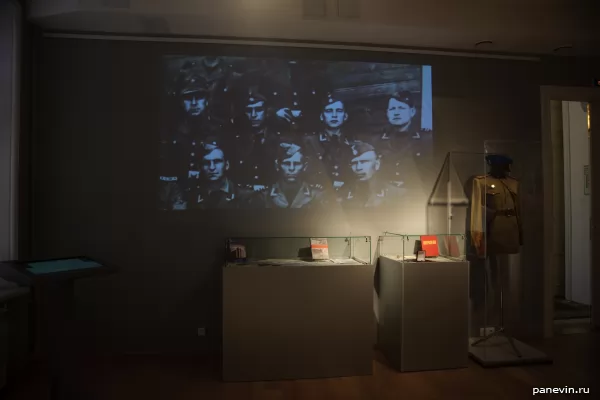
The third left in the second row is our traitor.
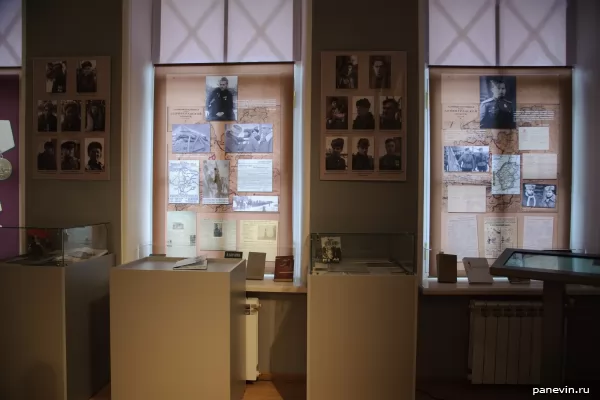
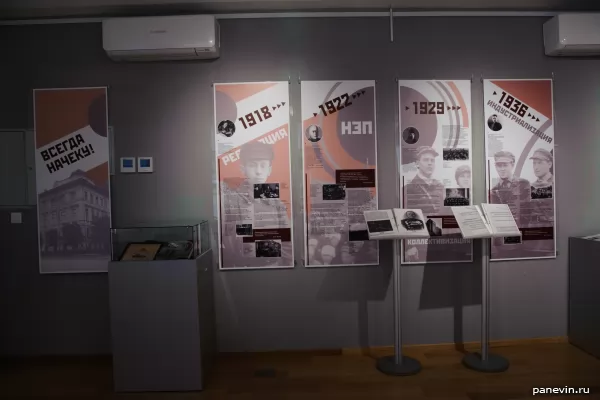

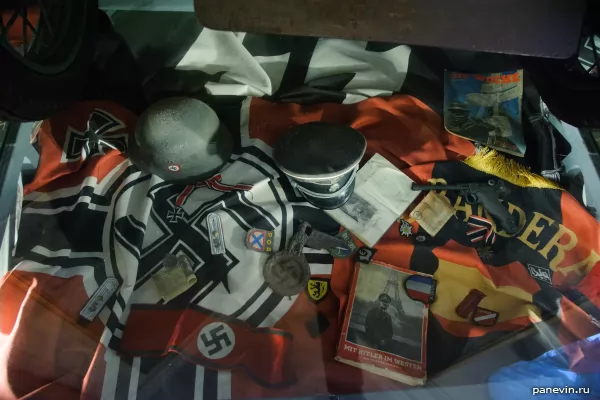
Trophies. An attentive viewer will find a patch of the French SS division Charlemagne, traitors of the ROA, and Latvian punishers.
Address of the Museum of Defense of Leningrad: St. Petersburg, Solyanoy Lane, 9 (metro station "Chernyshevskaya"). Opening hours: daily from 10.00 to 18.00, on Wednesday from 12.30 to 20.30; the day off is Tuesday, the last Wednesday of every month is a sanitary day. The cash desk is open: from 10 a.m. to 5 p.m. (entrance ticket - 200 rubles, as of 2020). You can pay by card, although this is not written on the museum website.
Website address: blokadamus.ru
The previous exposition looked like this . It seems that some of the exhibits migrated to LenReserv, but even so, the museum of defense and blockade of Leningrad became much better. And more spacious.
Share:
Themes: museum of defence of Leningrad 2 museums 22 photos 417 St.-Petersburg 119
Ticket sales through JetRadar.com service without commissions and markups.
← Blog
muzey_oboroni_leningrada_1
blog
©_© 2005–2025 Please put link, if you use materials of current site.










